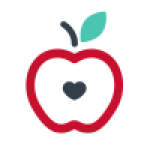How can you Stretch Students' Thinking?
One of the greatest challenges in managing an elementary classroom is to occupy the time of students who are away from the teacher with meaningful literacy activities. For a teacher to work with a small group of children, the other students in the class must be engaged in meaningful learning. Opitz and Ford (2001) concluded that, "Clearly, the power of the instruction that takes place away from the teacher must rival the power of the instruction that takes place with the teacher."
During 90 minutes of small group instruction, a teacher may work with three reading groups for 30 minutes each. In this scenario, each child will spend approximately 60 minutes away from the teacher. How can you best engage students in literacy activities during this time? Students not working in a small group with an adult should be engaged in independent tasks that are directly related to small-group or whole-group instruction, or working at literacy centers. It is essential that the work the students are asked to do be meaningful and also allow them to expand their learning.
Literacy centers are defined by developmentally-appropriate academic standards. The activities are designed to reinforce the objectives that are being taught during the school day. For example, if a skill for sentence structure is taught during the reading and writing block then it should be reinforced during center time.
If implemented appropriately, literacy centers can increase students' intrinsic motivation and keep their attention by providing choices, making learning relevant and personal, and making learning engaging (emotional, energetic, physical) (Jensen, 1998).
When can you use it?
Reading: Reading centers can be created to fit just about any topic. Generally, a center is focused on independent, peer, or shared reading, or it is connected to skill activities taught prior to the center time. Some classrooms include centers that focus on reading the walls; reading books, magazines, or posters that go along with topic; or are connected to a listening center. The centers may include a pocket chart, an overhead projector, a word wall, vocabulary review, or working with Microsoft Word. Skill centers may include activities that use graphic organizers, posters, flashcards, phonemic-awareness letter tiles, or other manipulatives.
Writing: Centers addressing this area should include writing for pleasure, to share information, or to convey meaning. Types of tasks used in the writing center include fill in the blanks; story starters; short-answer response, graphic organizers, or poetry. Students may use writing centers to create books, cards, stories, poems, recipes, lists, newspapers, charts, maps, or directions. A writing center can be used in virtually any content area.
Math: Ideas for enhancing math centers mainly call for the use of manipulatives. Some topics that are easily reinforced during center time are data collecting and analysis; sequencing of items by size/number or by time elapsed; learning to tell time; counting money or other manipulatives; taking measurements; or learning one-to-one correspondence.
Social Studies: Centers addressing social studies themes are natural extensions of units. Literature activities, role-playing, and drama are great extensions to reinforce themes. Other ideas to enhance social studies units include WebQuests, reading or creating maps and globes, studying transportation models, solving puzzles, and playing any type of money games to reinforce economic standards.
Science: Use literacy centers as a natural extension of a science unit. Be sure that the activities involve observing, hypothesizing, or experimenting with the subject of study. Students should be encouraged to ask "What if?" questions on a regular basis. Vocabulary or word study is also a natural inclusion in a science study area. Also, using a hand lens to investigate is always a favorite with children.









